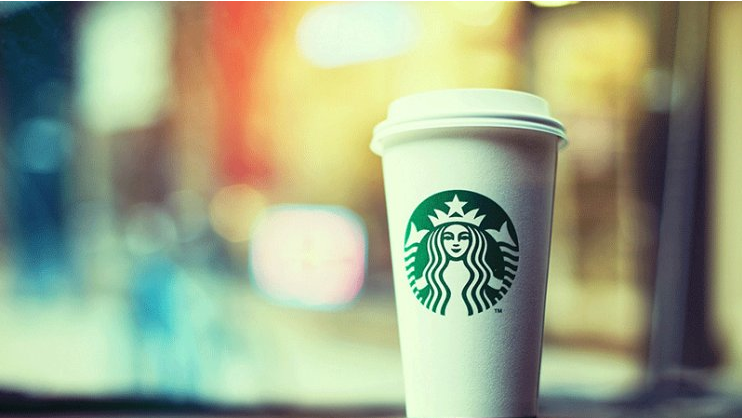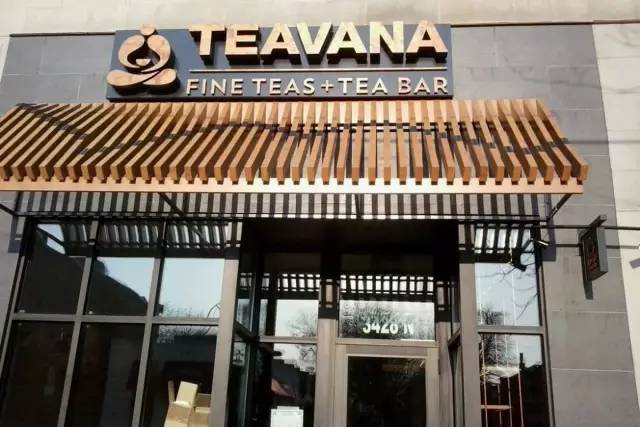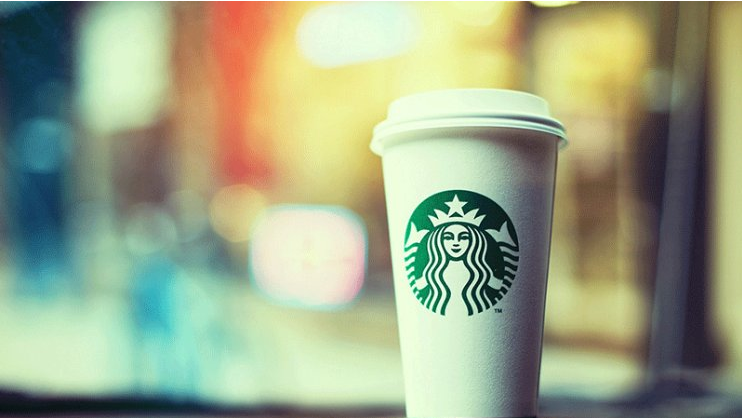Starbucks 'largest acquisition in history: 8.8 billion to control all stores in China
Follow the caf é (Wechat official account vdailycom) and found that Beautiful Cafe opened a small shop of its own.
From the acquisition of shares in Chinese joint ventures and the sale of franchises in China, Starbucks and McDonald's have been taking two different paths in China, reflecting the current differences in status between the two companies.
Starbucks plans to buy the remaining 50 per cent of its Chinese partners Uni-President and Uni-President for $1.3 billion, leading to wholly-owned 1500 Starbucks stores in eastern China, according to Bloomberg. Starbucks has been through acquisitions to achieve the goal of fully controlling the management rights of overseas markets.
In 1999, Starbucks opened its first Starbucks in China, with three long-term partners, Beijing Sanyuan Group and Meida, Unification and Hong Kong Meixin Group, which are joined by some funds. After China allowed wholly foreign-owned enterprises to open stores in 2005, Starbucks bought back shares in Meida, Sanyuan and Meixin in 2006, 2007 and 2011, taking over stores in central, northern and southern China. The situation is similar in the Japanese market, where Starbucks bought a stake in its Japanese partner for $913.5 million in 2014.

Frequently acquire shares in joint ventures to clear obstacles to expansion
Starbucks has always adopted a direct business model, but when expanding overseas, Starbucks generally chooses a local partner, that is, a franchise model, to help it enter a new market. and carry on the localization transformation.
When entering an unfamiliar market, the franchise model has great advantages. For brands, as long as they export the brand and management ability, they can have stable sales share and more and more market space.
However, when the overseas market matures and the profit scale is considerable, the advantage of franchise no longer exists for Starbucks, and Starbucks hopes to regain control, on the one hand, to improve the company's overall profit and decision-making power; on the other hand, it is a kind of maintenance of store quality and brand value.
Since last year, same-store sales in Starbucks' largest American market have reached a bottleneck and have not improved much. On the contrary, the Chinese market is growing rapidly. According to Starbucks' 2017 Q3 results released last night, comparable sales of same stores around the world increased by 4 per cent, compared with 7 per cent in the Chinese market. In terms of revenue, the Asia-Pacific region, including China, grew by 9 per cent, making it Starbucks's second largest market.
After taking back the independent management rights of stores in such a strong Chinese market, all profits will go into Starbucks' own pockets, and Starbucks will have 100% decision-making power over Chinese companies' business structure and store expansion. you can push forward the plan to have more than 5000 stores in China in 2021 at your own pace.
If the franchise or franchisee model is adopted, the resistance in store transformation is generally greater, and brands often have to pay a higher price. For example, when McDonald's promotes fresh beef burgers, it is also opposed by many franchisees; when promoting electronic self-service orders, they have to bear the cost of the machine and the cost of in-store transformation.
Wang Jingying, chief executive of Starbucks China, said that by fully controlling the operation of the Chinese market, Starbucks can enhance the experience of its stores and rely on China's advanced technology, such as mobile orders, to increase revenue.
In addition, Starbucks places great emphasis on the understanding of the brand and the transmission of value. The former CEO Schultz has stressed more than once that in many cases, the understanding and recognition of culture, values and guiding principles is more important than the business strategy itself. Therefore, with 100% independent management rights, the value of the brand is also very easy to control.
McDonald's, which sells franchises, and Starbucks, which firmly controls its own stores.
In an interesting contrast, while Starbucks was busy taking back its franchise, McDonald's sold its stores in China to Citic Capital and Carlyle, changing from a direct operation to a franchise model. Yum, the parent company of KFC, also split Yum China last year, bringing in investors such as Ant Financial Services Group.
The two fast-food companies are doing the opposite of Starbucks, which reflects that they are in different periods of growth, Starbucks is entering a golden age, while fast food such as McDonald's is in a "downward recovery period".
In terms of expansion, Starbucks is in a period of rapid expansion. In 2016, Starbucks opened 300 stores in China, almost one a day. Earlier this year, there was news that the largest fast-food chain might change ownership. Mark Kalinowski, an analyst at Nomura Securities, believes that Starbucks will have 37000 stores by 2021. If the rate of expansion remains the same, it will not be a problem to reach 50, 000 stores in the long term. It will take over McDonald's and become the largest restaurant chain in the world.
McDonald's is also expanding, with more than 2400 restaurants in mainland China and plans to open new stores at a rate of 250 a year, meaning a total of more than 3600 restaurants in 2021, well below Starbucks' plans to have more than 5000 coffee stores in 2021.
In terms of operating conditions and revenue growth, McDonald's performance has not been very optimistic in the past two years due to changes in consumer eating habits. In China, it is also affected by the time of happiness a few years ago. The company has been emphasizing cost reduction, and the sale of franchises has become a solution.
After the transfer of the franchise, McDonald's will greatly reduce costs, reduce the cost of expansion, and get one-time franchise payments and continuing royalties. The transfer of management rights in China and Hong Kong has earned McDonald's $2.08 billion. McDonald's is looking for a stable income when the risk is unknown.
Starbucks, on the other hand, is not as big as McDonald's. This year's Q3 (three months ended July 2) had revenue of $5.6 billion, just a little lower than McDonald's Q2 ($6 billion).
In the Asia-Pacific region, Starbucks' operating profit rose 22%, while McDonald's rose 24%, in part because it sold the franchise and recovered a lot of money. And you know, direct stores have higher requirements for brand operation and management capabilities and cash flow, and Starbucks has done a good job so far.
McDonald's cost reduction and stability, Starbucks' generous investment and bold expansion, the two companies at different stages show two different attitudes towards the company, but Starbucks is not at ease in its development. a wave of new casual fast food, cheap coffee and increasingly dense convenience stores are coming.
Important Notice :
前街咖啡 FrontStreet Coffee has moved to new addredd:
FrontStreet Coffee Address: 315,Donghua East Road,GuangZhou
Tel:020 38364473
- Prev

Starbucks announced today that it will close all Teavana stores.
Starbucks today announced revenue for the last quarter, which was in line with analysts' expectations, but Starbucks predicted that business would be a bit sluggish this quarter and announced that it would close 379 Teavana stores nationwide by the spring of 2018. The announcement comes after Starbucks announced that it would buy a 50% stake in its business in eastern China from its partners.
- Next

Starbucks Coffee has completed its largest acquisition in history and will open 5000 stores in China in 2021
NASDAQ:SBUX Coffee Company (NASDAQ:SBUX) announced on July 27th that it has paid US $1.3 billion to fully acquire 50% of Starbucks East China Joint Venture owned by Uni-President, the largest acquisition in Starbucks history, which means that Starbucks will directly own 100% of the operation rights of more than 2800 stores in the Chinese mainland region in the future. Starbucks East China
Related
- What ratio of water temperature and ground does the smart cup method use to press coffee? The difference between brewed coffee and filtered coffee?
- What is the standard process for the purpose of coffee cup testing? What is the difference between hand-brewed coffee and cup testing?
- How to use hand-brewed coffee paragon small golden balls? How does cold coffee lock in the aroma of coffee?
- Is American coffee black? What is the difference between American coffee and drip coffee?
- Unexpected! Well-known tea beverage brand Lele Tea will withdraw from the Zhengzhou market!
- Starbucks enters the fashion and beauty industry?! Netizen: Give me an ice American eye cream
- Why can American refills for free? The difference between Americano and American drip pot coffee
- Being chased out of the rain in front of Starbucks?! Store: Sheltering from rain under umbrellas poses a safety hazard
- The white moonlight has changed?! Lucky launches "Big Winter Pear American"
- Hand-brewed coffee three-stage method, high-sweet and universal brewing method to share! What does the high sweet water level of hand-brewed coffee mean?

